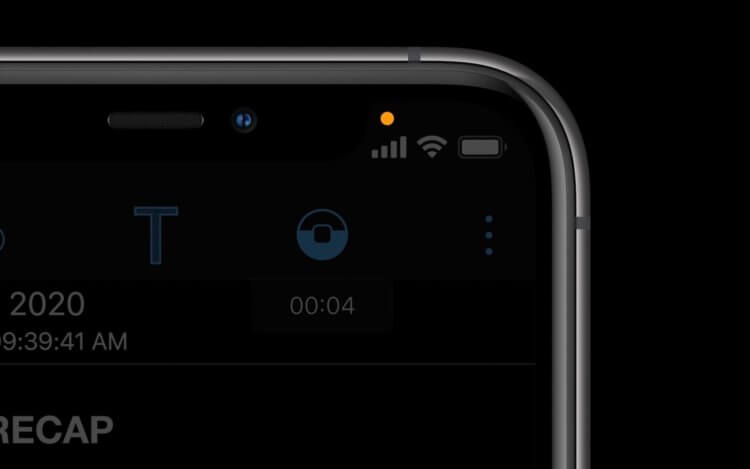Despite the initially different positioning, over the years of existence iOS and Android have become so similar to each other that at some point everyone stopped paying attention to where and which function appeared earlier. In the end, this is not so important, because the very fact of having the necessary opportunities, and not the palm, is decisive. But if users iOS, generally speaking, are used to treating the expansion of functionality Android rather calmly, then users of the latter have always looked at the improvements iOS with undisguised envy. It's good that third-party developers have learned to more than satisfy it.

This indicator alerts you to surveillance. Now it is on Android
Few people know that in iOS 14 a special indicator appeared that will notify the user if some application has gained access to the camera or microphone and can record. The system does not provide text notifications referring to a specific program. In the end, the user probably has to remember which utility he launched a second ago in order to understand exactly where the surveillance might come from. Moreover, if you leave the application, access to the camera and microphone will be automatically blocked. Now the same mechanism exists on Android, albeit in the form of a third-party application.
How to turn on the indicator light on Android
- Install Access Dots app from Google Play;
- Start Access Dots and turn it on by moving the toggle switch;

Access Dots will not work without special permissions
- Allow the app to access accessibility features;
- Customize the appearance and location of the indicator.
If you want, you can adjust the size of the indicators by increasing or decreasing them, as well as position them anywhere on the screen as you like. However, in my opinion, the most convenient place for this is the upper right corner. The fact is that human vision is arranged in this way, then we pay more attention to what is happening on the right than on the left. That is why many manufacturers place the front camera eyes in the upper left corner so that they are not so conspicuous.
After you enable Access Dots, it will run continuously, monitoring if any application has gained access to the camera or microphone. You can check that the mechanism is functioning properly by launching any application that is guaranteed to access the photography and audio recording functions. The first thing that comes to mind in these situations is the Camera app. It really refers to both. Therefore, do not be surprised that after launching you will see two luminous points on the screen: an orange one, indicating the fact of audio recording, and a green one, indicating a photo or video recording.
How to know if an app is tracking you

By default, the indicator appears at the top right, but this can be changed in the settings
As with the built-in mechanism iOS, the Access Dots application does not write on the screen which application has accessed the smartphone's microphone or camera, hoping for the user. This is very convenient, since no inscriptions overlap the contents of the display, indicating a possible tracking by a luminous pseudo light, which will remain on until the audio or video recording stops. This way, you can track if applications you trust continue to spy on you even in the background.
Access Dots works on all smartphones running Android with version 7.0 or higher. That is, on phones with Android 6.0, you will not be able to use – sorry for the tautology – the tracking mechanism. But everyone else can do it without any difficulty. Keep in mind, however, that you can only truly turn off Access Dots in Settings, by denying the app access to accessibility features. You don't have to look for the disconnect switch manually – you just need to slide it in the application, as it will automatically take you to 'Settings'.
